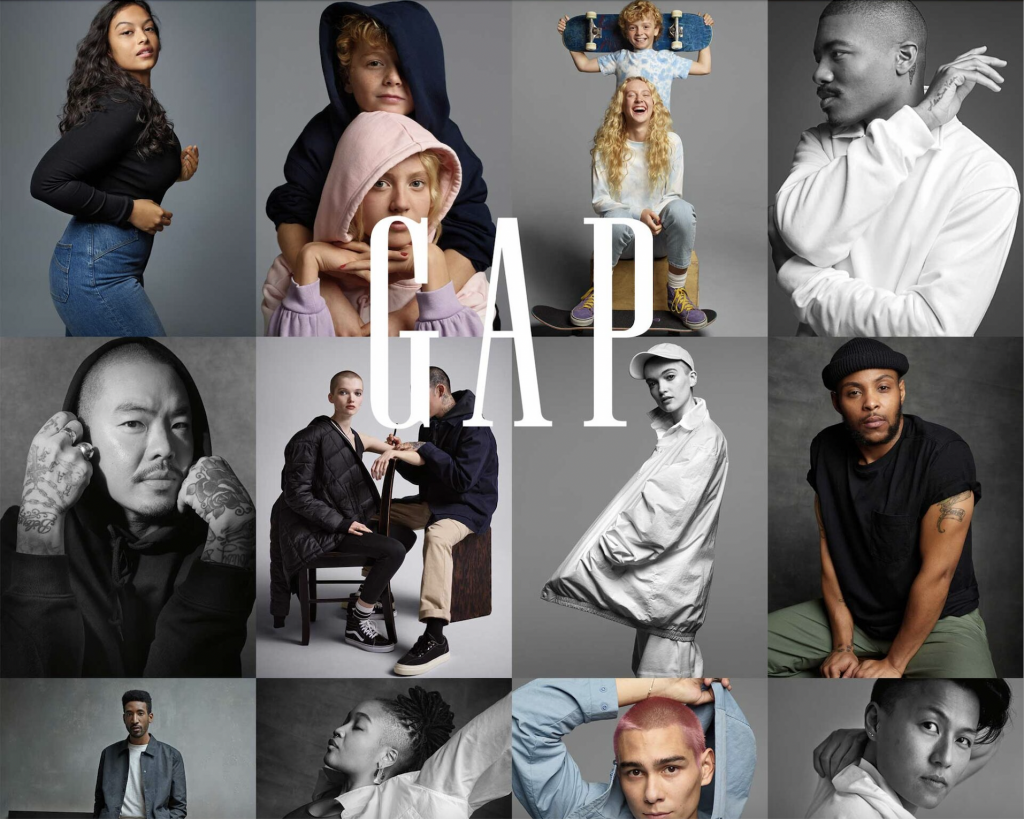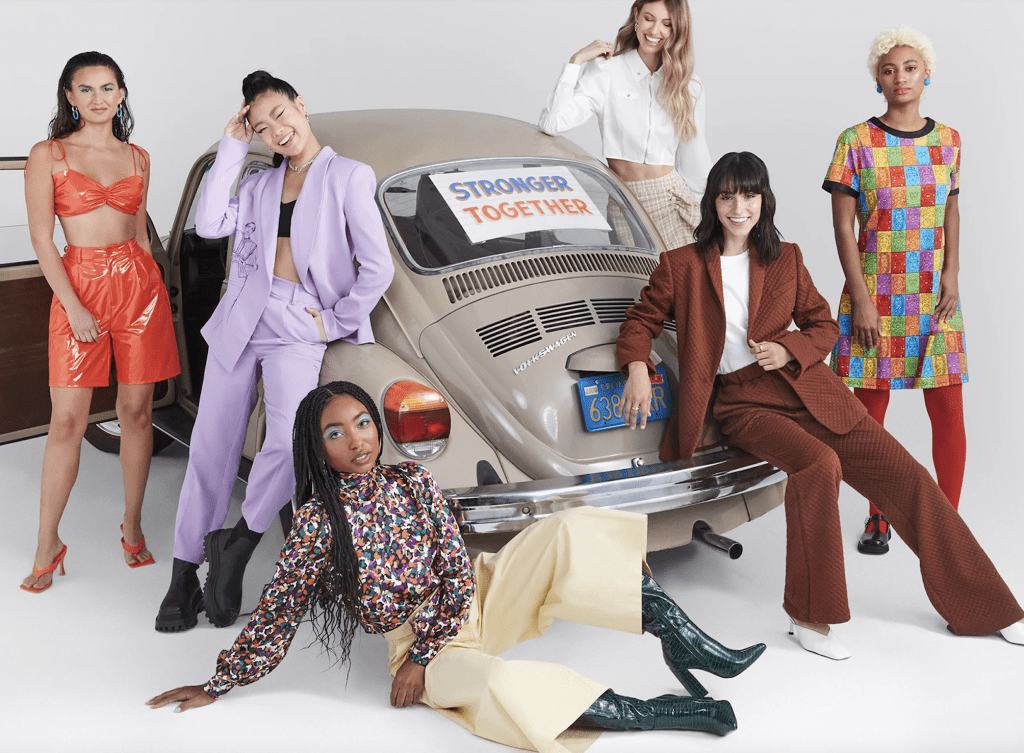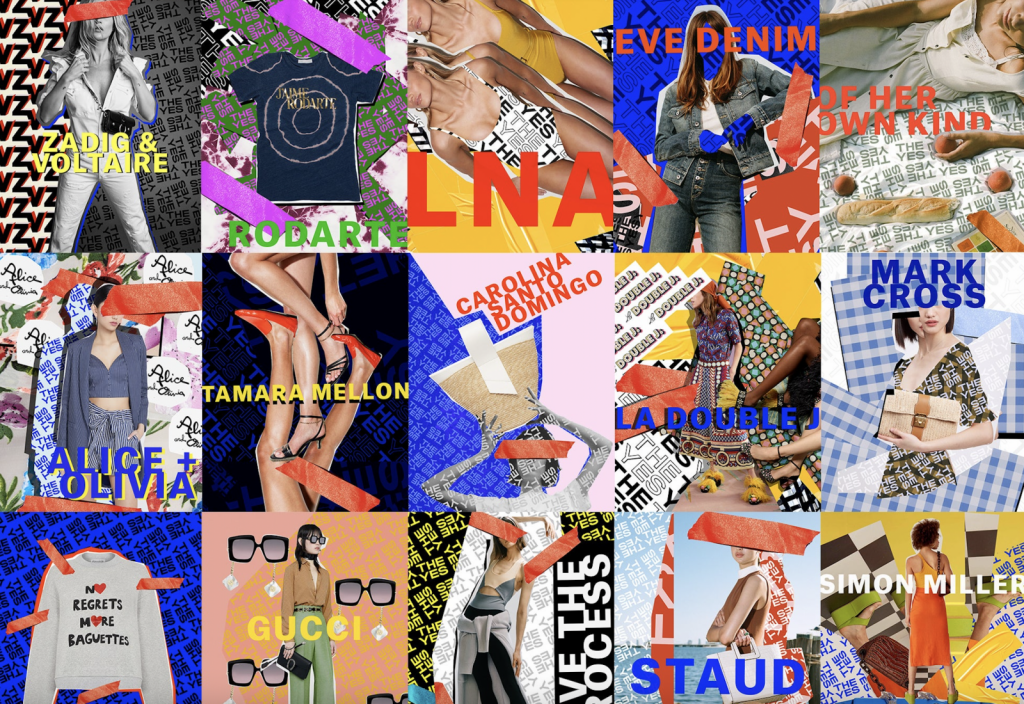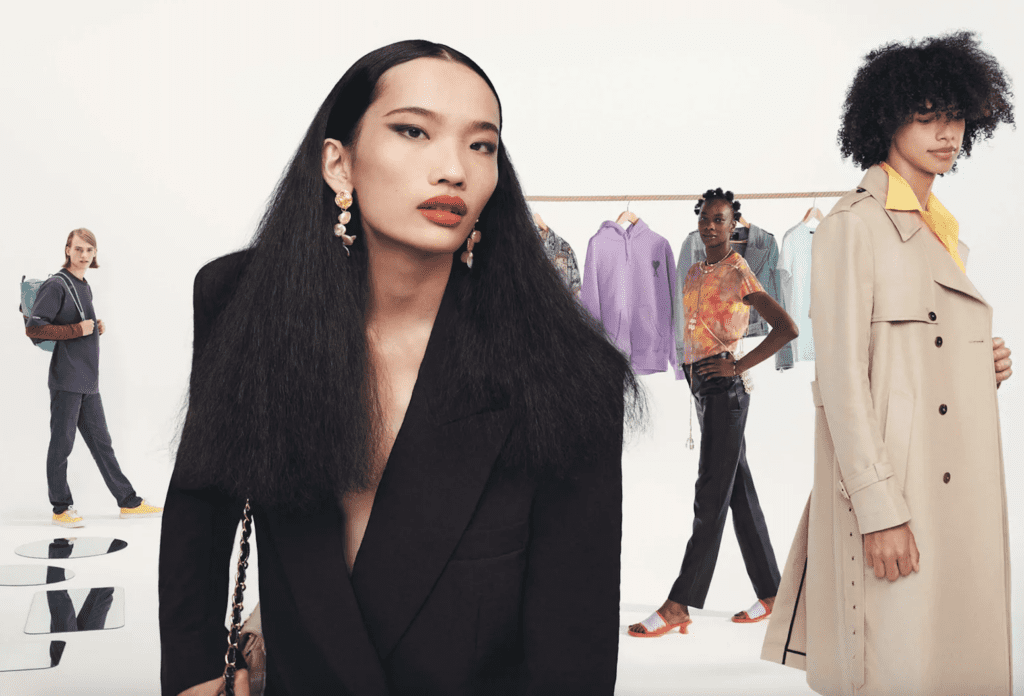On the heels of dropping the first offering from a larger collaboration that is set to span a decade, Wells Fargo is predicting that Yeezy Gap could generate almost $1 billion in sales for the mall retailer in 2022. In a note this week, Wells Fargo analyst Ike Boruchow put forth findings from a survey of 1,000 consumers, in furtherance of which Wells Fargo and data firm Guidepoint found that of the 530 current Gap shoppers surveyed, 64 percent said that they plan to purchase items from the heavily-hyped collaboration, with the average surveyed shopper saying that they are likely to shell out nearly $180 in the first year of the collection’s debut.
Of the 470 non-Gap shoppers that were surveyed, all of whom were familiar with Kanye West, 23 percent said that they will likely buy from the collection and spend an average of $126 in the first year. “Within the group of people who do not currently shop at Gap but plan to buy Yeezy products,” Wells Fargo found that “75 percent said they expect they will purchase other Gap products while shopping,” per CNBC, which suggests that “the tie-up has the power to drive new customers to Gap.” This bodes well for the ailing retailer, particularly given that, in all reality, items from the Yeezy collection may not be entirely accessible, due, in large part to the sell-out-fast nature of such collaborations, and especially ones tied to the likes of Mr. West.
The Yeezy Gap collection, itself – which currently consists exclusively of a $200 blue recycled nylon puffer jacket that dropped in June – “could drive up to $990 million in sales for Gap in fiscal 2022, and boost earnings by roughly 50 cents per share,” according to Boruchow, who “was the first analyst to turn bullish on Gap stock after the Covid-19 pandemic hit,” per Barron’s, “upgrading it in June 2020, just days before the Yeezy announcement.” That nearly-$1 billion sales figure is notably higher than one floated by UBS in March, which stated that Gap expects its Yeezy line of “modern, elevated basics” to exceed “$150 million in sales in its first full year in 2022.”
According to Bloomberg, “Gap envisions it becoming a billion-dollar revenue brand within eight years, with an upside case of sales exceeding $1 billion as soon as 2023.”
The “Halo” Effect
Potentially even more interesting than the sales that Gap will generate directly from Yeezy Gap-branded offerings is the revenue it will bring in from other Gap wares as a result of boosted consumer interest and attention driven by the musician-slash-designer’s collaboration. After all, it is worth noting that the sales figures cited by both Wells Fargo and UBS do not account for additional, non-collaboration sales that Gap will make due to the “halo” effect of having Yeezy on board, something that adidas has experienced since the three-striped company announced in 2013 that West would enter into a long-running deal.
Adidas x Yeezy and Yeezy Gap do not necessarily make for an easy apples-to-apples comparison for a number of reasons, including that adidas’ Yeezy-specific success has stemmed from footwear and Gap’s will center almost exclusively on apparel, and as Quartz noted last year, even Kanye’s Yeezy apparel brand has not seen the same level of smashing success that adidas’ Yeezy collab has. What is a relevant takeaway, regardless, is that adidas has benefitted from having West on its roster – both in terms of the sales of its largely-limited and often quick-selling Yeezy footwear, as well as its arsenal of non-Yeezy footwear and apparel offerings.
As adidas CEO Kasper Rorsted said in an interview back in 2018, “In the bigger context of us being a $25 billion company,” the Yeezy collection is “a small part.” However, Rorsted stated that even with that in mind, “There is no doubt the Yeezy brand has [had] a fundamental impact on our overall brand position,” and an impact in creating demand among sneaker-buyers, whether those sneakers were Yeezy ones or other adidas models. (West’s deal with adidas is slated to run through 2026.)
This effect has played out in other areas of the market, as well. Target, for instance, has fared well as a result of sales that have flowed from its recurring designer collaboration collections, which the big-box retailer rolled out in 2006 by way of its Go International venture and a debut tie-up with designer Luella Bartley. Consisting of limited-edition wares priced higher than Target’s traditional apparel offerings, the collaborative collections – which continue some 15 years later – are not known for driving significant volumes and revenue for the Minneapolis, Minnesota-headquartered chain. Instead, as the Washington Post aptly put it a few years ago, the “real win” is to get people into Target stores.
By way of the buzzy collabs, Target “has been successful in creating buzz,” the Washington Post’s Abha Bhattarai asserted, stating that “once shoppers are in the retailer’s stores, or on its website, they are likely to make additional” – or potentially, alternative – “purchases.”
For this same logic to apply to Gap, it assumes, of course, that the retailer has other products that consumers will want to buy after they are lured in by Yeezy Gap, and this is likely to require some work. Adidas, for instance, did not merely bring Kanye on board without making broader changes. It “made great gains with its Boost line of sneaker technology (widely praised for their comfort), along with Flux and NMDs,” Yahoo Finance’s Daniel Roberts stated in connection with the German sportswear titan’s success. “It has also refreshed its most classic shoes, the Superstars and Stan Smiths, which fall under its Originals division.”
An influx of interest thanks, in part, to viral TikTok videos and the resurgence of nostalgic trends, including Gap’s iconic logo-ed sweatshirts and its 90s-era High Rise Cheeky Straight Jeans, and a reemergence from COVID lockdowns has prompted confidence on the part of the company’s executives. “We’re quite optimistic,” Chief Executive Sonia Syngal told the WSJ this spring.
Nonetheless, given its lackluster existence in recent years, Gap will almost certainly have to go back to the drawing board to get the most out of its tie-up with West. And it appears to be doing that. Ms. Syngal “has laid out a plan to revive the long-struggling company by closing hundreds of Gap and Banana Republic stores, cutting the number of items it sells, and pushing executives to take more creative risks with the flagship brand,” according to the WSJ. At the same time, Syngal stated that no small part of the company’s success going forward will depend on “regaining creative relevancy,” which is where Kanye comes in.
Gap is banking on the magic that West has been able to work in the retail space in order to benefit its brand. Beyond bringing intangible value to Gap, the Yeezy collection is expected to sell in sizable volumes (particularly compared to early adidas Yeezy releases) and at full price. As such, CNBC states that “analysts expect the Yeezy merchandise to have a margin rate of about 50 percent, which is high for apparel, given that most of it should be sold at full price.”
And Gap needs these boosts. “The Gap brand will see a return of customers,” Neil Saunders, an analyst at GlobalData Retail, stated in March on the heels of the company’s Q1 earnings call. “But without some form of reinvention, it will revert to previous struggles which saw it lose shoppers, market share, and sales.” A tie-up with West is part of its strategy to remedy that.











